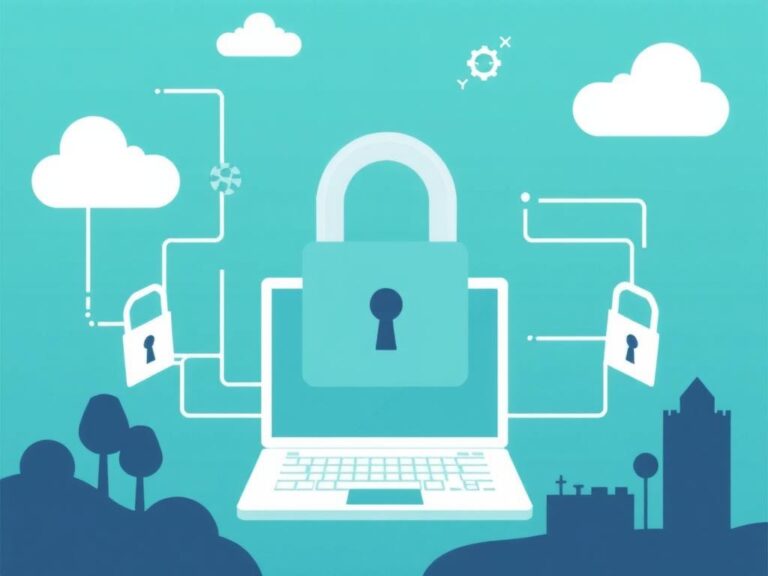Personal Proxies: Why You Need One and How to Choose Your Perfect IP
Personal proxies are one of those technical-sounding tools that suddenly become very practical once you understand them. If you’ve ever tried to access region-locked content, manage multiple social accounts, scrape public web data, or simply want an extra layer of privacy online, a personal proxy can feel like a Swiss Army knife—small, powerful, and surprisingly versatile. In this article we’ll walk through what personal proxies are, the real-world problems they solve, the different kinds available, and a pragmatic step-by-step approach to choosing the right IP for your needs. Whether you’re a marketer, developer, privacy-conscious user, or just curious, you’ll come away with a clear checklist to pick the best fit without getting lost in jargon.
What is a Personal Proxy and How Does It Work?
At its core, a personal buy proxies is an intermediary server that forwards your internet requests. Instead of your device talking directly to a website, it sends the request to the proxy, which then makes the request on your behalf, returns the website’s response, and sometimes modifies the traffic along the way. This change of route masks your original IP address, can alter your apparent location, and can add speed, stability, or access to content that might otherwise be restricted. The key difference between a personal proxy and public proxies or VPNs is control and exclusivity. A properly configured personal proxy tends to be private or dedicated to you (or your team), rather than shared with thousands of strangers. That exclusivity often translates into more reliable performance, fewer abuse-related blocks, and more predictable behavior when automating tasks.
Why People Use Personal Proxies: Real Use Cases
People use personal proxies for a wide range of legitimate purposes, and the reasons often overlap. Here are some of the most common scenarios where a personal proxy is beneficial. First, privacy and anonymity: if you don’t want websites to see your home IP or ISP, a proxy offers another layer that separates you from direct traffic. For many users this is about reducing tracking or protecting their location when browsing from public Wi-Fi networks. Second, geo-testing and bypassing region restrictions: developers and marketers use proxies to see how a site appears to users in other countries, or to access local content for verification and QA. Third, automation and multi-account management: social media managers, e-commerce sellers, and data analysts use proxies to manage multiple sessions without getting flagged for using the same IP address. Finally, web scraping and data collection: researchers and businesses extract publicly available data more reliably when requests come from a pool of rotating or location-targeted IPs, avoiding rate limits or temporary bans.
Types of Proxies: Pros, Cons, and Best Uses
Not all proxies are created equal. Choosing between residential, data center, and mobile proxies—or deciding between static and rotating IPs—depends on what you’re trying to accomplish. Below is a simple comparison to help clarify.
| Type | Pros | Cons | Best For |
|---|---|---|---|
| Residential Proxies | High trust level (appear as home users), less likely to be blocked | More expensive, lower bandwidth | Web scraping, account management, geo-targeted access |
| Data Center Proxies | Fast, inexpensive, high bandwidth | Easier to detect, higher block rates on restrictive sites | Speed-sensitive tasks, testing, price-sensitive automation |
| Mobile Proxies | Highest legitimacy (mobile carriers), great for mobile-specific apps | Costly, limited availability, variable latency | Mobile app testing, mobile-ad verification, high-value account work |
| Rotating vs Static | Rotating = avoids rate-limits; Static = consistent identity per session | Rotating can break logins; Static easier to fingerprint | Rotate for scraping; Static for persistent logins |
Key Features to Look for When Choosing a Personal Proxy
Start by clarifying what matters to you: speed, location, stealth, cost, or reliability. Different tasks prioritize different attributes, and a balanced choice depends on use case. Location and geo-targeting: If you need to appear as a user from a specific city or country, choose a proxy provider with that coverage. Performance and latency: Data center proxies are typically fastest; residential or mobile proxies introduce more variability but offer legitimacy. Authentication and management: Good providers offer API keys, IP allowlists, username/password combos, and dashboards to manage sessions. Pool size and rotation: A larger pool reduces the chance of using an IP that’s already been blocked. Support and transparency: Responsive customer support and clear terms (about bandwidth, concurrency, and allowed use) matter when things go wrong.
Practical Checklist: How to Choose Your Ideal IP
Choosing a personal proxy doesn’t need to be overwhelming. Use this step-by-step checklist to match a proxy type and provider to your needs.
- Define your primary goal: privacy, scraping, testing, or account management?
- Decide on IP type: residential for legitimacy, data center for speed, mobile for mobile-specific tasks.
- Choose between static and rotating IPs based on whether persistent sessions or frequent IP changes matter.
- Verify geographical coverage and pick locations you need.
- Check provider features: authentication methods, pool size, API access, and proxy protocols (HTTP, HTTPS, SOCKS5).
- Evaluate cost structures: per IP, per GB, or subscription. Look for trials or money-back policies.
- Test latency and reliability via trial accounts, monitoring tools, or test scripts before committing.
- Read the provider’s terms of service to make sure your intended use is allowed and legal.
Questions to Ask Before Buying
Before you press “buy,” ask the provider these short, practical questions: How many concurrent connections are allowed? Do you get sticky sessions (same IP for N minutes) with rotating pools? What logs do you retain and for how long? What happens if an IP is blocked—do you get a replacement? Is there customer support with a fast response time? Clear answers to these will save time and reduce surprises.
Setting Up and Managing Your Personal Proxy (Basics)
Most providers supply connection details and simple setup instructions. The typical fields you’ll configure are IP address (or hostname), port, and authentication (username/password or IP whitelist). Many modern providers offer proxy chaining, SDKs, or browser extensions for convenient use. When using proxies for automation or scraping, implement polite scraping practices: respect robots.txt (where appropriate), throttle requests, and randomize headers and timings to reduce pattern detection. Monitor performance and failures: good monitoring lets you switch proxies or adjust concurrency before tasks grind to a halt.
Security, Privacy, and Legal Considerations
Proxies add privacy but are not a complete privacy solution. Your traffic can still be monitored by the proxy provider; if strong confidentiality matters, combine proxies with end-to-end encryption (HTTPS) or a trustworthy VPN. Read a provider’s logging and privacy policy—some keep minimal, short-retention logs; others keep detailed records. If you are working with sensitive accounts or data, prefer providers with strict no-log policies and good reputations. Legal considerations: using proxies to commit fraud, bypass paywalls illegally, or access accounts you don’t own is unlawful and unethical. Make sure your use case is legitimate. Also be aware regional laws might restrict certain types of anonymizing services in specific countries—always comply with local regulations.
Costs and Where to Buy
Pricing models vary widely: monthly subscriptions, pay-as-you-go per GB, or per-IP leasing. Residential and mobile proxies typically cost more than data center ones. For a hobbyist doing light tasks, inexpensive data center proxies or free trials are often fine. For business or high-stakes work, invest in a reputable provider that offers SLA guarantees, customer support, and replaceable IP pools. Buy from established providers with transparent pricing and clear terms. Avoid cheap random marketplaces that resell hijacked or unstable IPs—you might face sudden blocks or legal exposure. Look for trial periods, refunds, and community reviews to validate a provider’s claims before scaling up purchases.
Common Mistakes and How to Avoid Them
People often make a few predictable mistakes when starting with proxies. First, choosing the cheapest option without testing. Cheap proxies can be slow, shared with many users, or flagged and blocked quickly. Second, ignoring rotation strategy: using a static IP when scraping heavily invites bans; conversely, rotating IPs while maintaining a logged-in session causes frequent re-authentication. Third, not monitoring: without logs and alerts you won’t know when proxies fail, leading to silent data loss. Fourth, neglecting legal and ethical checks: always ensure your activities comply with terms of service and laws. Avoid these by testing early, using small controlled experiments, and applying best practices like throttling, randomized request patterns, and respectful scraping.
Quick Reference: When to Use Which Proxy
- Residential: Web scraping of retail or ticket sites, multi-account social media management, geo-specific testing where legitimacy matters.
- Data Center: Speed-sensitive tasks, performance testing, or budget-limited scrapers that don’t target very restrictive platforms.
- Mobile: Mobile app testing, ad verification, or mobile-specific account tasks where carrier IPs reduce suspicion.
- Rotating: Large-scale scraping or crawling to distribute requests and avoid rate limits.
- Static/Sticky: Tasks requiring session persistence, such as maintaining a logged-in session for longer operations.
Conclusion
Choosing the right personal proxy is about matching your real needs—privacy, speed, location, or persistence—with the right type of IP and provider features. Start by defining your goals, pick the appropriate proxy type, test with a small trial, and monitor performance and legality as you scale. With the right setup, personal proxies make online work smoother, safer, and more flexible—but they’re a tool, not a loophole: use them responsibly, choose reputable providers, and keep an eye on both performance and compliance.





